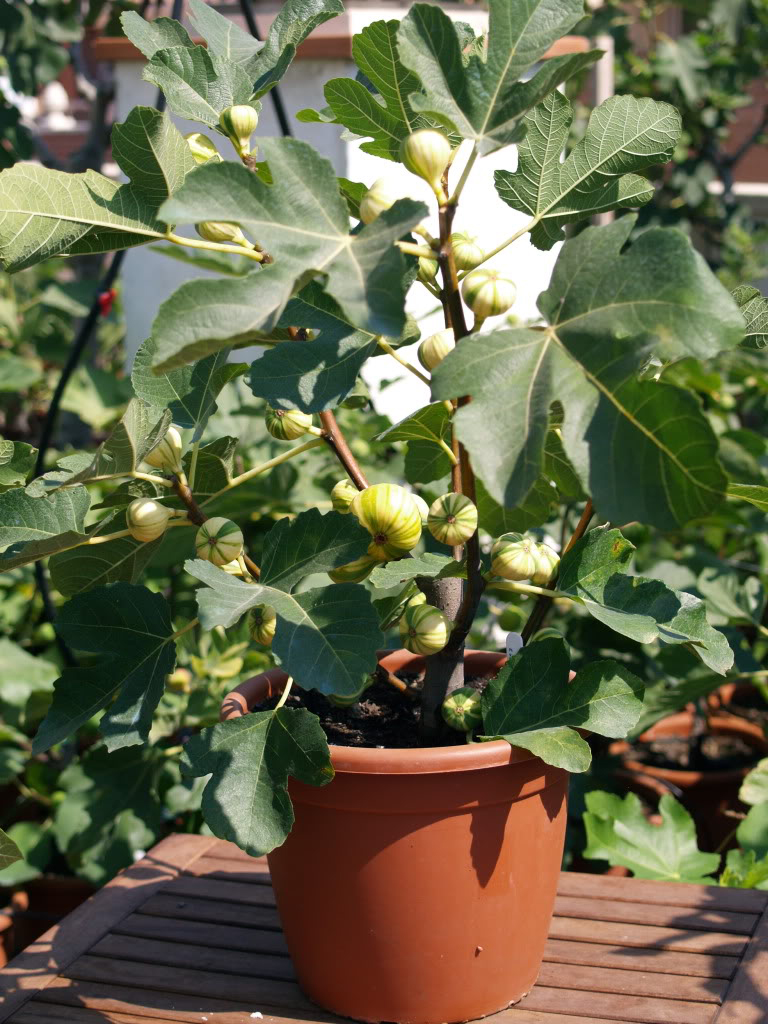Top 10 Fruits You Can Grow in Containers

1. Lemons
There are many reasons why you have to try this one out – most importantly, lemons are extremely healthy. They are anything but difficult to take care for. Also these can make your garden far more beautiful and better scented.
To grow lemons, you have to give them full sun, well-drained soil, regular feeding and to keep them away from cold weather, strong winds and to not overwater them.
2. Figs
A best aspect regarding figs is that you can eat them right from the tree, or you can later utilize them in cooking. To develop fig tree in a container, make sure to develop them in soil-based potting mix and include fine bark chips. Figs require full or fractional sun and they need to develop in well drained soil. Water them routinely until they’re settled and prune them a bit. Amid the dormant season, remove all the dead, diseased, or weak branches to encourage growth.
3. Dwarf Peach
Dwarf peaches are the best choice if you want to grow peaches, yet you don’t have enough space in your garden. Other than this, the dwarf peach tree can give fruits sooner than other fruit trees and it grows rapidly. There are couple of assortments of dwarf peach trees that you can grow, yet regardless of which one you pick make a point to check whether the tree is healthy. To guarantee the best development, plant them in late winter or early spring.
4. Sugar Baby Watermelon
They require full sun position and should be situated 36 to 60 inches separated from each other. Plant them in well drained soil that is rich with natural matter and water the dirt routinely until the watermelons are about the size of a tennis ball – after this, exactly when the dirt is dry.
5. Cherries
Cherry trees grown in a container need to be treated the same way just like an in-ground tree. They need a good fertilizer with organic nutrients – you can find fertilizers that are made exactly for cherry trees. During fall and early spring, you will need to take care of the tree with chasing bugs away. This can be done with sulfur spray, but you should be careful with the usage because too much of this spray can kill the greenery, and the tree in general.
6. Pineapples
Unlike the cherry trees that are prone to bugs, the pineapple is a tough fruit and it isn’t prone to insects and disease problems. However, this one also takes such a long time to produce fruit – it will take you about two years from the moment you plant it until the harvest. The pineapple requires warm temperature and full sun position, so during cold winter nights protect it from freezing temperatures.
7. Strawberries
Unlike other fruits, strawberries have small root ball and that means you can plant them even in very small containers. No matter what kind of container you choose, it’s important for strawberries to be planted in well-drained soil. They need full sun position, at least 6-8 hours and make sure to rotate the container every 3-4 days, if the sunlight is coming from one directions. To ensure the best growth, feed the strawberries every 3-4 weeks with a liquid fertilizer high in phosphorus.
8. Apple Red Spur
In order to get the best apples, it’s very important to plant the tree in the right soil. Apple trees require very fertile soil, so it’s recommended to test both the soil and the pH value of it before you do the planting. The ideal range for apple trees is the one where the pH is 6.0-7.0, however you should avoid heavy or poor-drained soils. You can plant them anytime of the year, but if there is hard frost, it is better to wait for warmer times.
9. Pomegranate
For pomegranate it’s important to be planted in warm and arid areas. However, even you leave in a place where the climate is cool, you can still grow pomegranate indoors with the right conditions and outside while the weather is as recommended. Pomegranates are self-pollinating, which means that you just need to set the fruit. They need full sun and need to be watered deeply once in a week, or more if the weather is really dry.
10. Blueberries
In order to grow blueberries in container, the most important thing is to plant them in the right soil. The blueberries want an acidic soil and most garden soil don’t come close to the required acidic level, so most likely you will need to buy. Unlike the strawberries that could be planted even in a small jar, the blueberries must be planted in a large pot and also get at least 6-8 hours of sun. However, growing blueberries means being patient as well – it might take them a year or more to produce any fruit.
Source: www.topinspired.com


